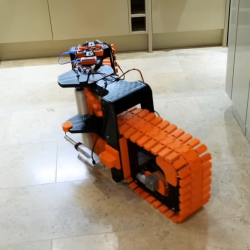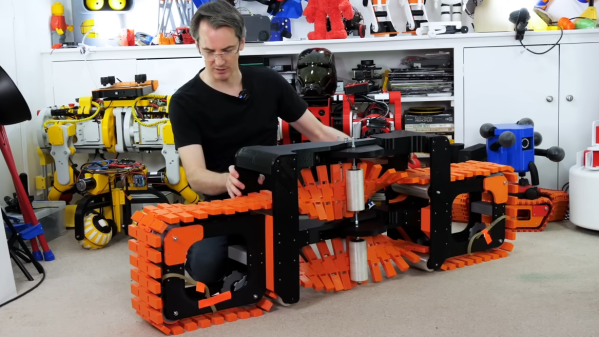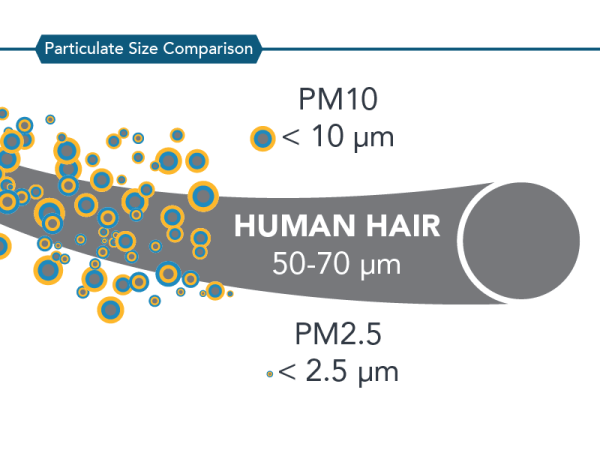If you missed it, I put up a new podcast yesterday. You can subscribe via the iTunes store or just use the RSS podcast feed. You guys asked for interviews, so here we go. Ben Heckendorn is going to be our first one. He and I are going to put it together later this week, so submit your question in the comments if you want me to ask him. [I’ll pick and choose, so make it good]
Ben built the Xbox 360 laptop, the colecovision portable, the PSP analog joystick, and plenty of others.
Hackaday Podcast Episode 266: A Writer’s Deck, Patching Your Battleship, And Fact-Checking The Eclipse
Before Elliot Williams jumps on a train for Hackaday Europe, there was just enough time to meet up virtually with Tom Nardi to discuss their favorite hacks and stories from the previous week. This episode’s topics include the potential benefits of having a dual-gantry 3D printer, using microcontrollers to build bespoke note taking gadgets, the exciting world of rock tumbling, and the proper care and maintenance required to keep your World War II battleship in shape. They’ll also go over some old school keyboard technologies, DIP chip repairs, and documenting celestial events with your home solar array. By the end you’ll hear about the real-world challenges of putting artificial intelligence to work, and how you can safely put high-power lithium batteries to work in your projects without setting your house on fire.
Check out the links below if you want to follow along, and as always, tell us what you think about this episode in the comments!
Benchmarking Latency Across Common Wireless Links For MCUs
Although factors like bandwidth, power usage, and the number of (kilo)meters reach are important considerations with wireless communication for microcontrollers, latency should be another important factor to pay attention to. This is especially true for projects like controllers where round-trip latency and instant response to an input are essential, but where do you find the latency number in datasheets? This is where [Michael Orenstein] and [Scott] over at Electric UI found a lack of data, especially when taking software stacks into account. In other words, it was time to do some serious benchmarking.
The question to be answered here was specifically how fast a one-way wireless user interaction can be across three levels of payload sizes (12, 128, and 1024 bytes). The effective latency is measured from when the input is provided on the transmitter, and the receiver has processed it and triggered the relevant output pin. The internal latency was also measured by having a range of framework implementations respond to an external interrupt and drive a GPIO pin high. Even this test on an STM32F429 MCU already showed that, for example, the STM32 low-level (LL) framework is much faster than the stm32duino one.
Continue reading “Benchmarking Latency Across Common Wireless Links For MCUs”
Ask Hackaday: Why Are Self-Checkouts Failing?
Most people who read Hackaday have positive feelings about automation. (Notice we said most.) How many times have you been behind someone in a grocery store line waiting for them to find a coupon, or a cashier who can’t make change without reading the screen and thought: “There has to be a better way.” The last few years have seen that better way, but now, companies are deciding the grass isn’t greener after all. The BBC reports that self-checkouts have been a “spectacular failure.” That led us to wonder why that should be true.
As a concept, everyone loves it. Stores can hire fewer cashiers. Customers, generally, like having every line open and having a speedy exit from the store. The problem is, it hasn’t really panned out that way. Self-checkout stations frequently need maintenance, often because it can’t figure out that you put something in the bag. Even when they work flawlessly, a customer might have an issue or not understand what to do. Maybe you’ve scanned something twice and need one of them backed off. Then, there are the age-restricted products that require verification. So now you have to hire a crew of not-cashiers to work at the automated not-register. Sure, you can have one person cover many registers, but when one machine is out of change, another won’t print a receipt, and two people are waiting for you to verify their beer purchase, you are back to waiting. Next thing you know, there’s a line.
Continue reading “Ask Hackaday: Why Are Self-Checkouts Failing?”
Möbius Tank’s Twisty Treads Became Bendy
[James Bruton]’s unusual Möbius Tank has gotten a little more unusual with the ability to bend itself, which allows it to perform turns even though it is a single-track vehicle.

The Möbius Tank was a wild idea that started as a “what if” question: what if a tank tread was a Möbius strip? We saw how [James] showed it could be done, and he demonstrated smart design and assembly techniques in the process.
He’s since modified the design to a single-track, and added a flex point in the center of the body. Two linear actuators work together to make the vehicle bend, and therefore give it the ability to steer and turn. A normal tread would be unable to bend in this way, but the twist in the Möbius tread accommodates this pivot point perfectly well.
It works, but it’s not exactly an ideal vehicle. With the tread doing a 90-degree twist on the bottom, there isn’t a lot of ground clearance. In addition, since the long vehicle has only a single tread, it is much taller than it is wide. Neither does it any real favors when it comes to stability over uneven terrain, but it’s sure neat to try.
Even if it’s not practical, Möbius Tank is wild to look at. Check it out in the video, embedded just under the page break.
Hackaday Podcast Ep 241: Circuit Bending, Resistor Filing, The Butterfly Keyboard, And The Badge Reveal
Hackaday Editors Elliot Williams and Tom Nardi meet up virtually to talk about the week’s top stories and hacks, such as the fine art of resistor trimming and lessons learned from doing overseas injection molding. They’ll go over circuit bending, self-driving cars, and a solar camera that started as a pandemic project and turned into an obsession. You’ll also hear about Linux on the Arduino, classic ICs etched into slate, and an incredible restoration of one of the most interesting Thinkpads ever made. Stay tuned until the end to hear about a custom USB-C power supply and the long-awaited Hackaday Supercon 2023 Vectorscope badge.
Check out the links below if you want to follow along, and as always, tell us what you think about this episode in the comments!
Download your own, unlimited-edition MP3 of this week’s podcast.
The Questionable Benefits Of Paying More For Air Quality Monitors
Does paying more for air quality monitors (AQMs) make sense? This was the question which [Achim Haug] at the Air Gradient project sought to answer, with the answer being a rather revealing ‘not at all’. Using data from the independent South Coast Air Quality Management District agency (South Coast AQMD), a plot was created of a range of commercially available AQMs for PM2.5 pollutants and their performance against a reference monitor. Here a value of 1.00 would mean performance equal to the (expensive, calibrated) reference.

This plot shows clearly that paying more for an AQM does not get you better performance, with the reason for this explored in a follow-up article by [Achim], where a range of AQMs are checked for which PM2.5 sensors they actually use. Perhaps unsurprisingly, most AQMs use the same PM2.5 sensors, with the sensor module not really affecting the cost of the AQM as they all cost about $10-20 in bulk.
Rather it seems that the other sensors (for CO2, NO2 and other measurements) along with features such as WiFi, LoRa determine much of the price tag. For getting good measurements, properties such as airflow over the sensors, the implemented compensation algorithms are probably the main things you want to look at when purchasing (or building) an AQM.
(Heading image: particulate matter sizes, relative to a human hair. Credit: California ARB)
















